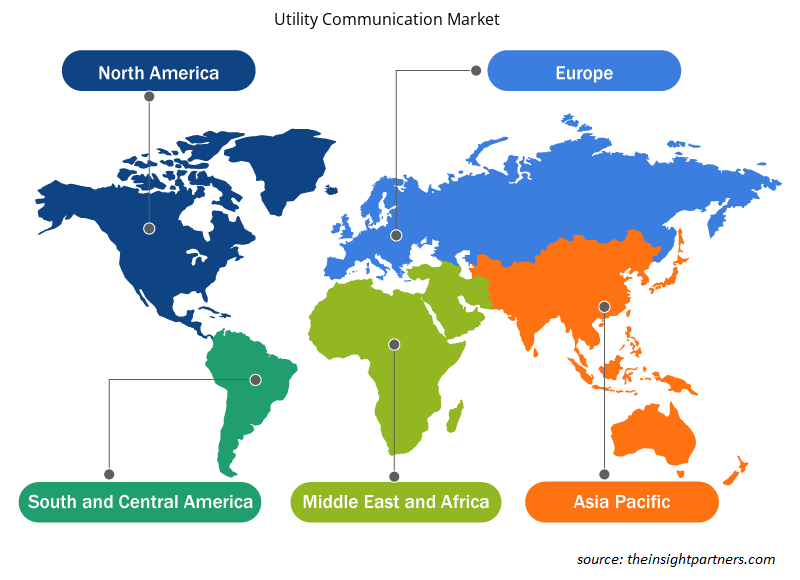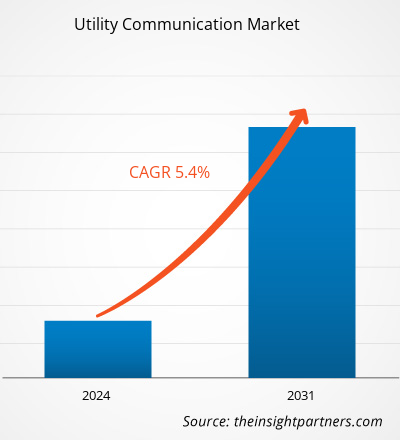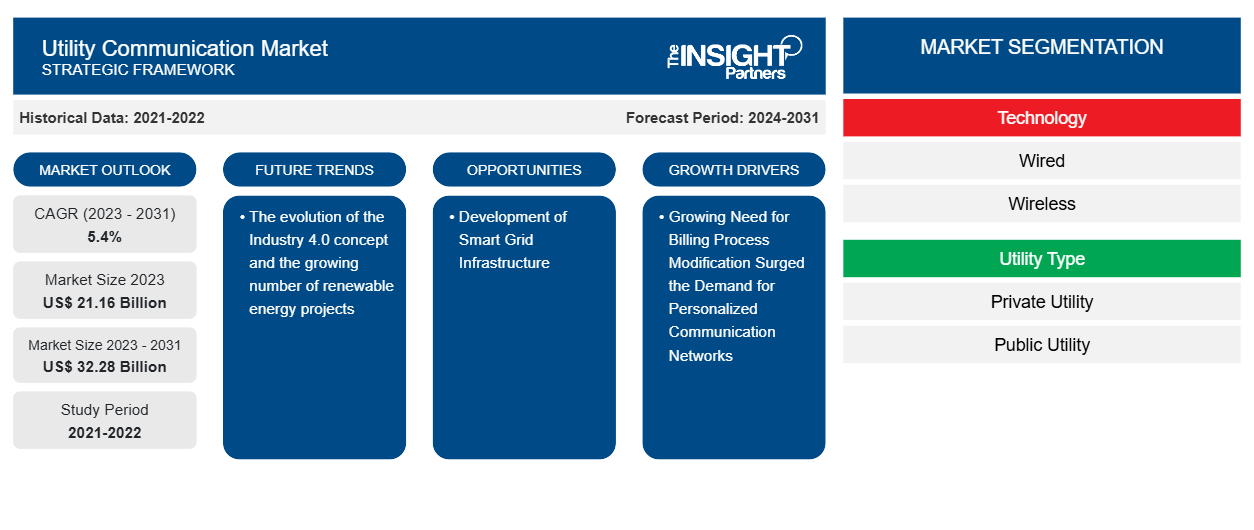ユーティリティ通信市場の規模は、2023 年の 211.6 億米ドルから 2031 年には 322.8 億米ドルに達すると予測されています。市場は 2023 年から 2031 年にかけて 5.4% の CAGR を記録すると予想されています。インダストリー 4.0 コンセプトの進化と再生可能エネルギー プロジェクトの増加は、ユーティリティ通信市場の重要なトレンドであり続けると思われます。
ユーティリティ通信市場分析
公共通信市場は、課金プロセスの変更の必要性が高まり、パーソナライズされた通信ネットワークの需要が急増し、分散型エネルギーリソース (DER) の需要も高まっているため、急速に成長しています。市場は、電力インフラの開発を促進するための政府の好ましい取り組みと投資に牽引され、着実に拡大しています。さらに、スマートグリッド インフラの開発と、モノのインターネット (IoT) と人工知能 (AI) を統合した技術的に高度なシステムの採用の増加により、市場の成長に有利な機会が生まれています。
ユーティリティ通信市場の概要
ユーティリティ通信は、WAN および LAN を介したデータ、ビデオ、音声のより信頼性が高く、安全で、安全な伝送を保証するシステムです。この通信システムは、危険な場所に簡単に設置できるという利点をユーザーに提供します。ユーティリティ通信システムは、ビデオ監視、スマート グリッド、監視制御およびデータ収集 (SADA) システム、イーサネット ベースの接続など、多数のネットワークを使用して機能します。さらに、電力消費と配電を監視するためのユーティリティによる有線および無線通信システムの需要の高まりにより、予測期間中に市場が拡大しています。
要件に合わせてレポートをカスタマイズする
このレポートの一部、国レベルの分析、Excelデータパックなど、あらゆるレポートを無料でカスタマイズできます。また、スタートアップや大学向けのお得なオファーや割引もご利用いただけます。
-
このレポートの主要な市場動向を入手してください。この無料サンプルには、市場動向から見積もりや予測に至るまでのデータ分析が含まれます。
ユーティリティ通信市場の地域別洞察
予測期間を通じてユーティリティ通信市場に影響を与える地域的な傾向と要因は、Insight Partners のアナリストによって徹底的に説明されています。このセクションでは、北米、ヨーロッパ、アジア太平洋、中東およびアフリカ、南米および中米にわたるユーティリティ通信市場のセグメントと地理についても説明します。

- ユーティリティ通信市場の地域別データを入手
ユーティリティ通信市場レポートの範囲
| レポート属性 | 詳細 |
|---|---|
| 2023年の市場規模 | 211.6億米ドル |
| 2031年までの市場規模 | 322.8億米ドル |
| 世界のCAGR(2023年~2031年) | 5.4% |
| 履歴データ | 2021-2022 |
| 予測期間 | 2024-2031 |
| 対象セグメント |
テクノロジー別
|
| 対象地域と国 |
北米
|
| 市場リーダーと主要企業プロフィール |
|
市場プレーヤーの密度:ビジネスダイナミクスへの影響を理解する
ユーティリティ通信市場は、消費者の嗜好の変化、技術の進歩、製品の利点に対する認識の高まりなどの要因により、エンドユーザーの需要が高まり、急速に成長しています。需要が高まるにつれて、企業は提供内容を拡大し、消費者のニーズを満たすために革新し、新たなトレンドを活用し、市場の成長をさらに促進しています。
市場プレーヤー密度とは、特定の市場または業界内で活動している企業または会社の分布を指します。これは、特定の市場スペースに、その規模または総市場価値と比較して、どれだけの競合相手 (市場プレーヤー) が存在するかを示します。
ユーティリティ通信市場で事業を展開している主要企業は次のとおりです。
- ABB株式会社
- 富士通株式会社
- ゼネラル・エレクトリック・カンパニー
- ハネウェルインターナショナル
- オミクロンエレクトロニクス株式会社
- ロックウェル・オートメーション
免責事項:上記の企業は、特定の順序でランク付けされていません。

- ユーティリティ通信市場のトップキープレーヤーの概要を入手
- 過去2年間の分析、基準年、CAGRによる予測(7年間)
- PEST分析とSWOT分析
- 市場規模価値/数量 - 世界、地域、国
- 業界と競争環境
- Excel データセット
最新レポート
お客様の声
購入理由
- 情報に基づいた意思決定
- 市場動向の理解
- 競合分析
- 顧客インサイト
- 市場予測
- リスク軽減
- 戦略計画
- 投資の正当性
- 新興市場の特定
- マーケティング戦略の強化
- 業務効率の向上
- 規制動向への対応























 無料サンプルを入手 - ユーティリティ通信市場
無料サンプルを入手 - ユーティリティ通信市場